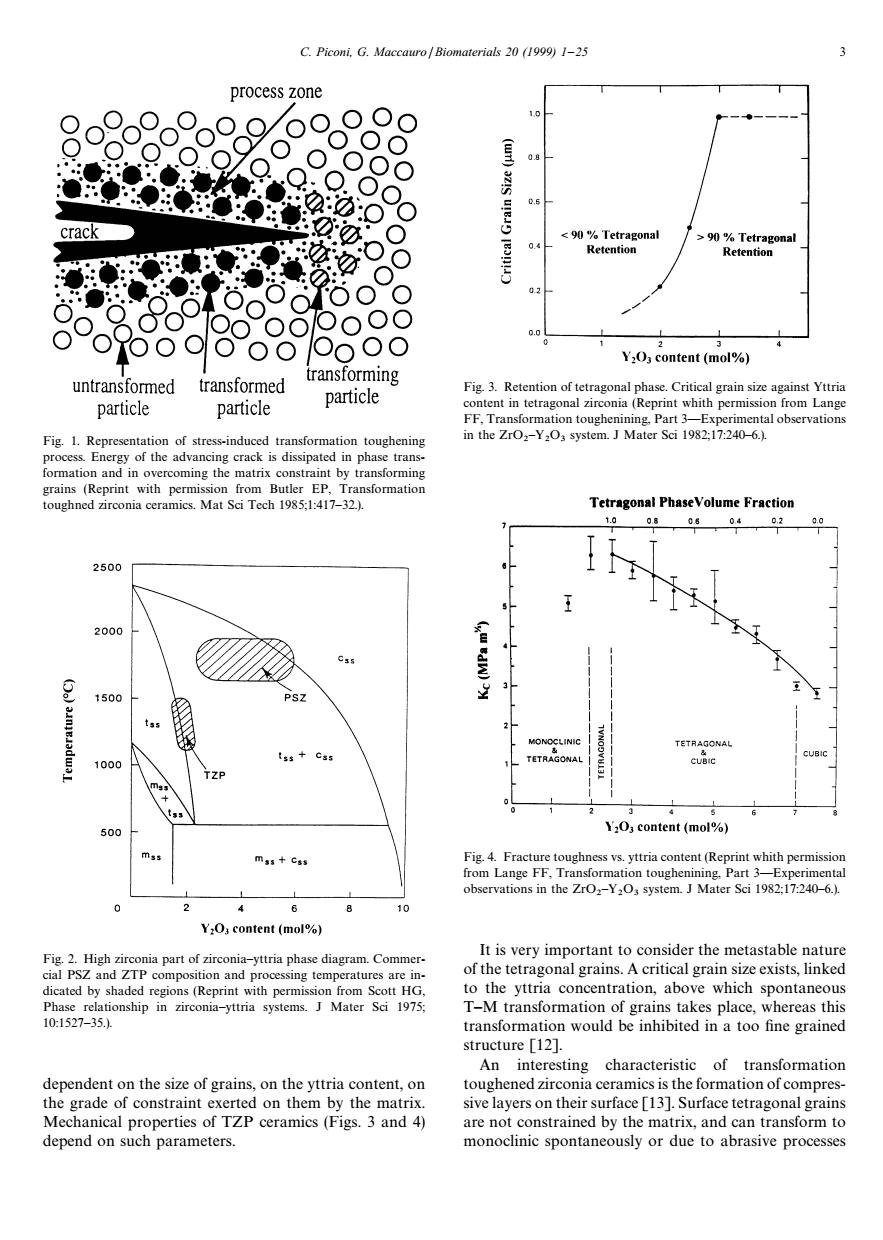正在加载图片...

C.Piconi.G.Maccauro/Biomaterials 20(1999)1-25 process zone 88 O ● ● 0 crack 0kTi ● 6oo 02 Y:O content (mol%) untransformed transformed transforming particle particle particle Fig.1.Repr of stre and in c ing the matrix transforming toughned roonia seramics.Mat Sci Tech Tetragonal PhaseVolume Fraction 2500 2000 50 sz TZP 500 Y:O content (mol%) mas+Cas s vs.ytt system M 92120 2 Y:O content (mol%) onia part of zirconia-yttria phase diagram.Commer ant to onal grains.A critical grain size exists.linked to the yttria concentration,above which spontaneous T-M transt characteristic of transformatiot dependent on the size of grains,on the yttria content,on toughened zirconia ceramics is the formation of compres sive layers on their surface [13].Surface tetragonal grains an transform toFig. 1. Representation of stress-induced transformation toughening process. Energy of the advancing crack is dissipated in phase transformation and in overcoming the matrix constraint by transforming grains (Reprint with permission from Butler EP, Transformation toughned zirconia ceramics. Mat Sci Tech 1985;1:417—32.). Fig. 2. High zirconia part of zirconia—yttria phase diagram. Commercial PSZ and ZTP composition and processing temperatures are indicated by shaded regions (Reprint with permission from Scott HG, Phase relationship in zirconia—yttria systems. J Mater Sci 1975; 10:1527—35.). Fig. 3. Retention of tetragonal phase. Critical grain size against Yttria content in tetragonal zirconia (Reprint whith permission from Lange FF, Transformation toughenining, Part 3—Experimental observations in the ZrO2 —Y2 O3 system. J Mater Sci 1982;17:240—6.). Fig. 4. Fracture toughness vs. yttria content (Reprint whith permission from Lange FF, Transformation toughenining, Part 3—Experimental observations in the ZrO2 —Y2 O3 system. J Mater Sci 1982;17:240—6.). dependent on the size of grains, on the yttria content, on the grade of constraint exerted on them by the matrix. Mechanical properties of TZP ceramics (Figs. 3 and 4) depend on such parameters. It is very important to consider the metastable nature of the tetragonal grains. A critical grain size exists, linked to the yttria concentration, above which spontaneous T—M transformation of grains takes place, whereas this transformation would be inhibited in a too fine grained structure [12]. An interesting characteristic of transformation toughened zirconia ceramics is the formation of compressive layers on their surface [13]. Surface tetragonal grains are not constrained by the matrix, and can transform to monoclinic spontaneously or due to abrasive processes C. Piconi, G. Maccauro / Biomaterials 20 (1999) 1—25 3